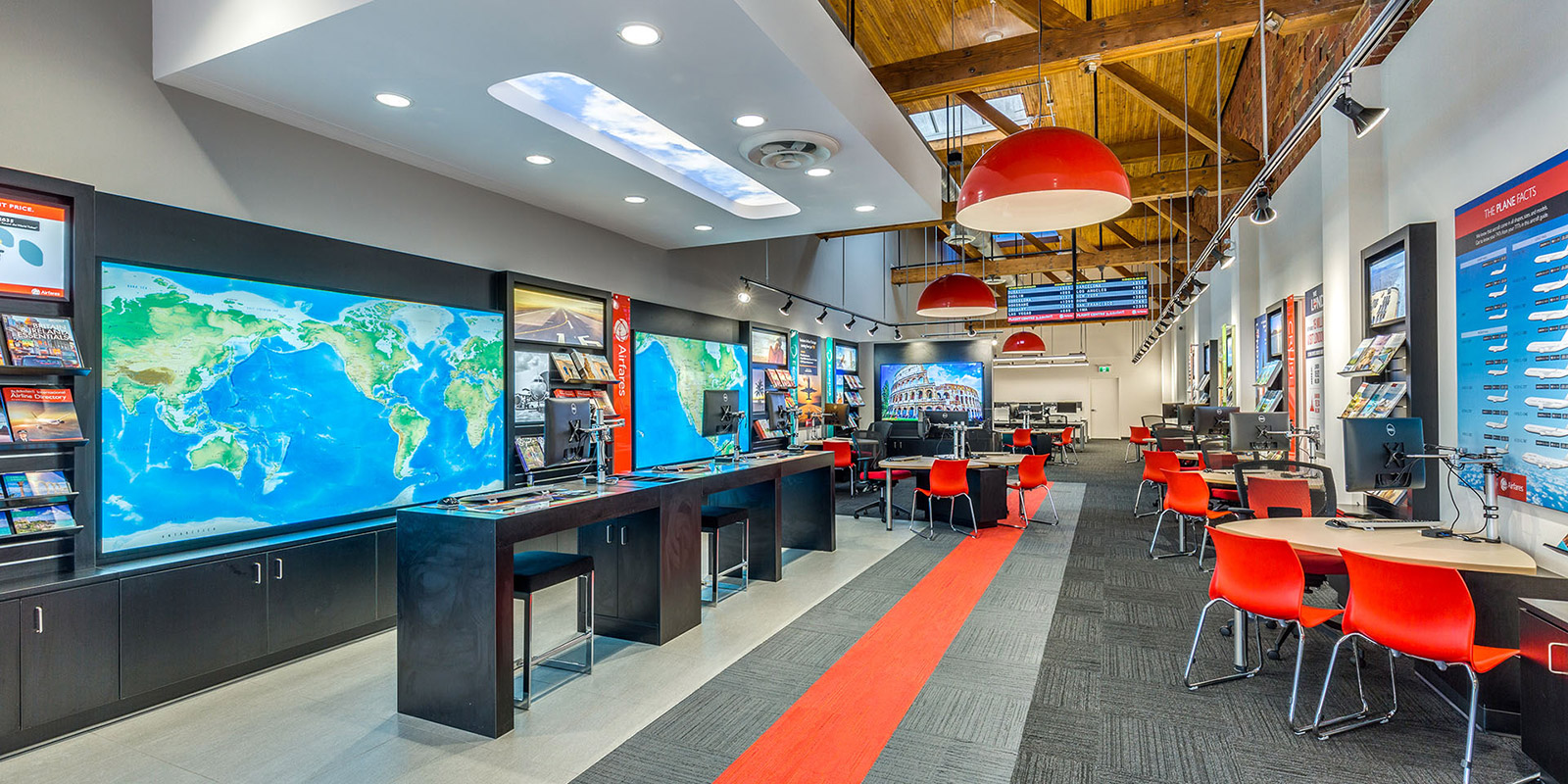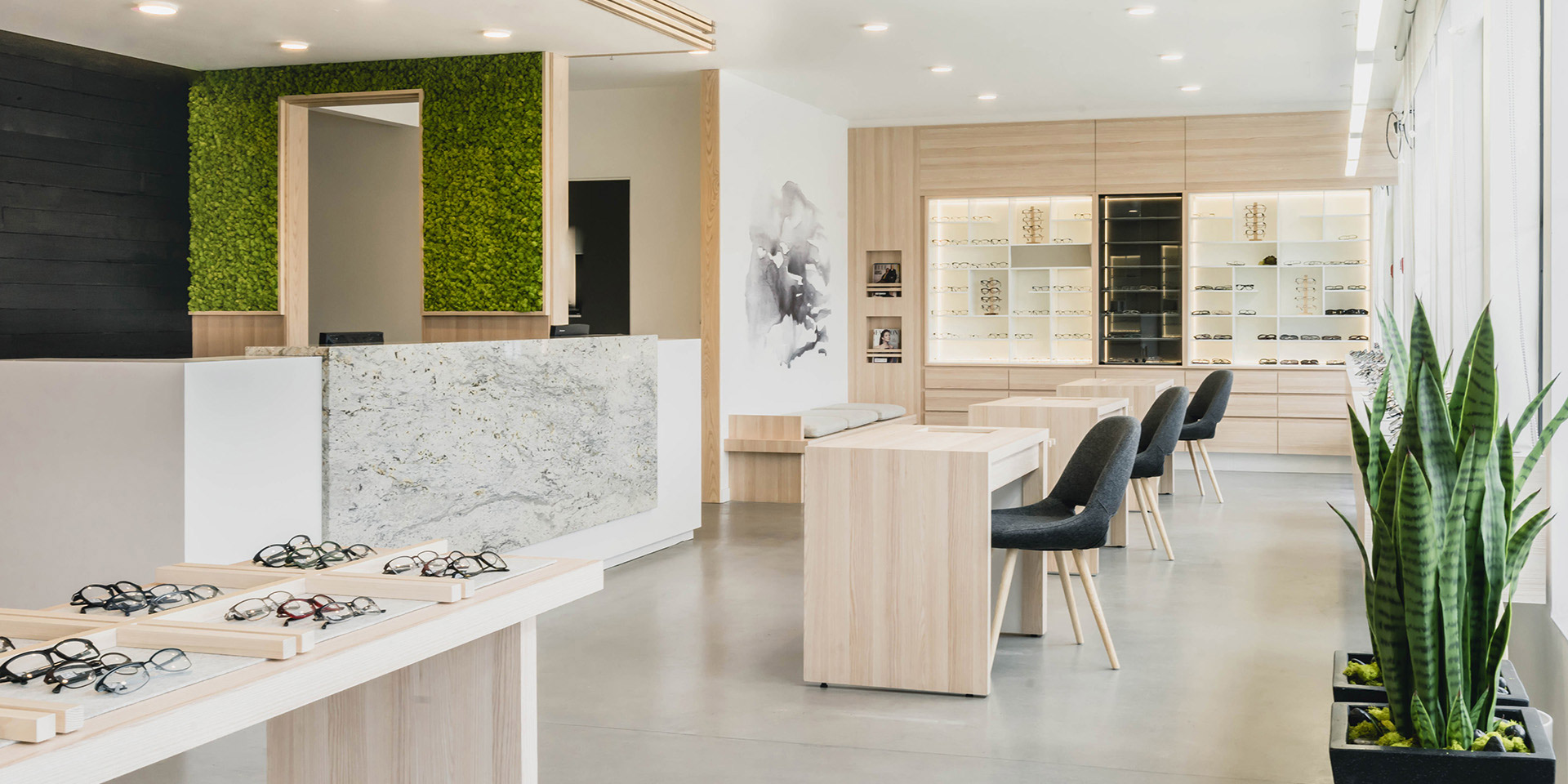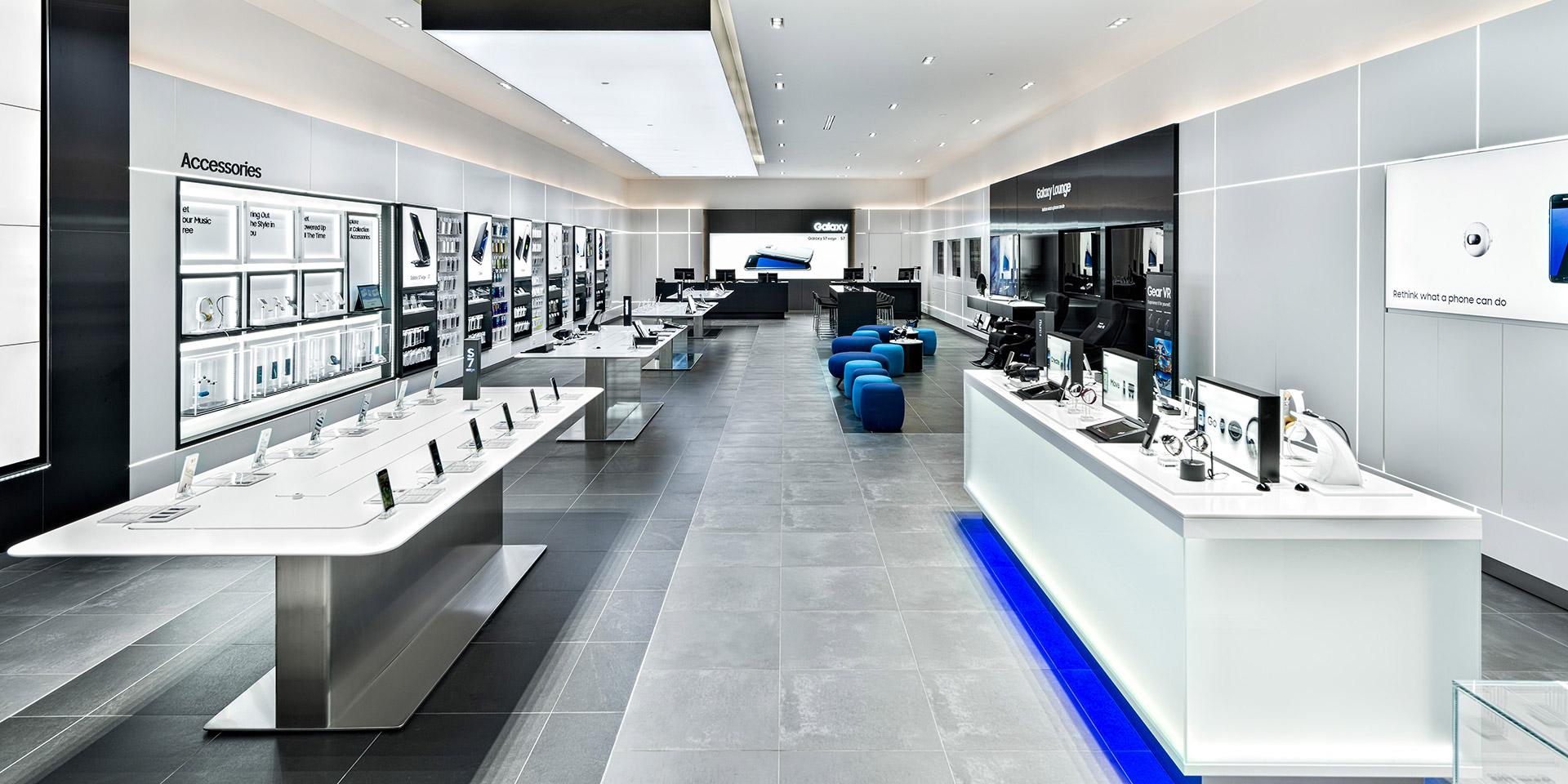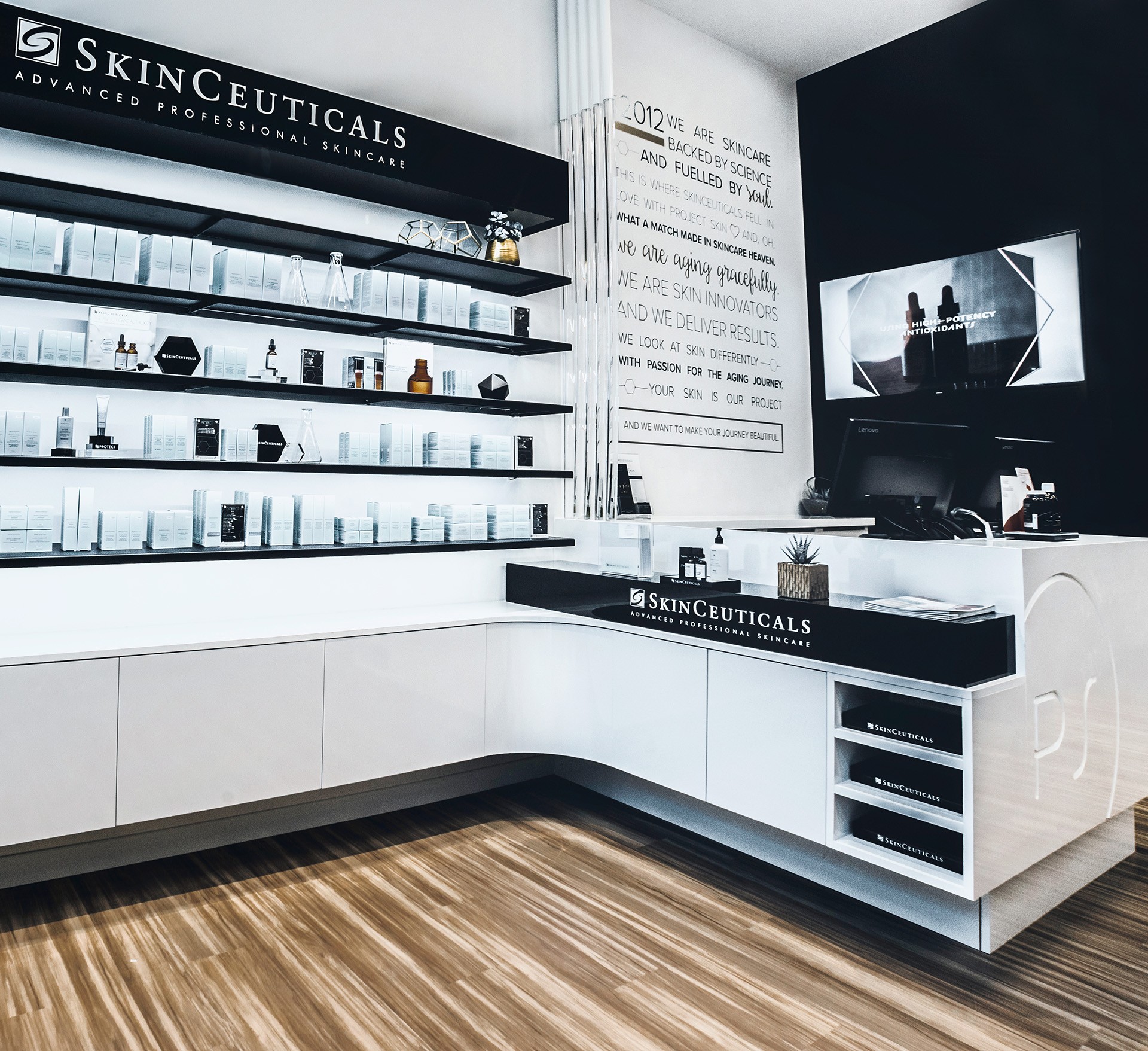What Does a Retail Interior Designer Do?
What exactly does a retail interior designer do?
What do they specialize in and how can they help with your retail project?
This conversation is an important part of initial discussions we have with potential clients, so they properly understand an interior designer’s role in the project process.
When people hear “interior designer”, some think that means decorator, and some think project coordinator, but the true role is typically more extensive and involved than that.
We’ve created this post to clear up the confusion for anyone else who might be wondering what it is that a retail interior designer does, and how they can bring value to a project.
Let’s start with a simple definition:
“A retail interior designer specializes in the design and construction of retail spaces. Combining a wide range of creative and technical skills, they work alongside architects, engineers, contractors, and other professionals to build branded retail environments.”
Now that’s a very broad statement. An interior designer can be involved in a project at many levels. But it’s a good place to start and we’ll fill in the gaps with more specific details in each of the sections below.
Why hire a retail specialist for your interior design project?

View Case Study: Flight Centre
Each industry-specific interior designer has their own set of tools to create cohesive, functional designs for their clients.
For designers who focus on corporate offices, that may be a functional programming document.
For designers specializing in healthcare, it may be a working knowledge of appropriate health and safety standards.
For retail interior designers, it’s expert knowledge of how customers interact with spaces in a retail shopping environment, and how to translate a brand into a three-dimensional experience that helps clients sell products.
A skilled retail designer will integrate the more brand-specific elements of a space (signage, wayfinding, fixture design) into the overall design to make a cohesive brand statement, create an impactful customer experience, and drive overall retail performance.
A quick note on retail projects & spaces
The term “Retail” refers to so much more than just businesses that sell products (such as fashion & electronics). It also includes businesses that sell services and experiences. From fitness to food, wellness, travel, and any type of space where customers engage with a product or brand, the principles of retail experience design play a key role.
Many retail spaces now also serve as a showroom to help a brand connect with its potential customers. It’s less about selling the customer something at the specific moment, and more about exposing them to the brand so that when they make a purchase in the future (in store, online, or at another location) they will already have a positive relationship with that brand.
A retail interior design specialist can elevate any commercial space where a business aims to connect with and influence their target customer.
What is the possible scope of project involvement of a retail interior designer?

View Project Feature: Boardwalk Optometry Surrey
Retail interior designers can wear many hats throughout a project’s lifespan.
How involved you’d like a designer to be in your project is likely based on your experience in the industry and how much of the work will be taken on in-house.
Here at Cutler we are often involved from start to finish, coordinating and overseeing entire projects. But this isn’t always the case. Our scope of involvement varies widely.
Different Types of Clients & Projects
Our firm specializes in creating unique customer-facing brick and mortar spaces that are an accurate physical representation of our client’s brand. For some of our clients, that includes assisting with brand development, and for others that simply means applying existing brand design guidelines to a new location.
To illustrate the varying potential for scope, here are 2 examples of the different types of clients & projects that we regularly encounter in our practice:
Ex 1. Brands in Need of an Overhaul
Some of our clients are independent retailers that need a complete overhaul of their branding package, which can involve:
- new logo design
- brainstorming new key operating and design principles
- developing a brand guideline package
… and finally, applying those tools to a physical bricks & mortar location. All while staying within the predetermined budget. Which then includes:
- custom fixture design
- furniture design
- signage design
- change management
- programming
- merchandising
- marketing
- and final staging.
Ex 2. Large Retailers with Pre-Established Brand Guidelines
On the other hand, we also work with larger national or international retailers who have already been through the process (whether internally or externally) of developing brand guidelines and are working to roll out stores across North America.
For these types of clients, we may not necessarily be involved in the development of the branding package or design of store fixtures, but can assist in applying the design guidelines to a specific bricks & mortar location:
- project management
- completing technical drawings
- obtaining permits
- finding and managing contractors and other necessary consultants
- liaising with city, municipality officials, or the landlord
… and figuring out how, if at all, the branding guidelines need to be adjusted to suit a certain neighbourhood.
What specific value can a retail interior designer bring to each phase of a project?

View Case Study: Samsung
There are six phases of the project broken down below explaining how or why an interior designer specializing in Retail design would be a value-add to your project.
1. Due Diligence
Most interior designers would agree that the first phase of design for a new project is the preliminary design phase. However, retail design differs in that it is valuable to onboard the interior designer during the Due Diligence phase to weigh in on a specific location’s potential, or assist in reviewing leases to protect the retailer.
We often work with commercial real estate brokers early in the project when clients are looking for new spaces, to help determine (based on brand design guidelines) what type of spaces to look for. Is the brand more suited to a newly-built CRU on the main floor of a large residential building, with high visibility? Or would a unit in a Heritage building with unique characteristics be more brand-appropriate?
Interior designers specializing in retail design have the knowledge to assist in this decision-making.
2. Preliminary Design
Despite the benefits of having an interior designer involved in the location scouting and lease negotiations process, the preliminary design phase is when we are engaged by the majority of our clients. At this point the lease has been finalized, and the design or drawing production needs to begin in order to keep the project on schedule.
The preliminary design phase is typically when the designer will conduct a site survey and gather information on the building and neighbourhood. For retail projects, the interior designer will then establish a design program based on these details, and more importantly, your brand guidelines and goals for the store.
3. Schematic Design
Schematic design is when the real fun begins! This process is fairly standardized across all types of interior design. The designer spends time further developing the conceptual design solutions established in the Preliminary Design phase.
It is also during this phase that the designer would build a preliminary project schedule and budget to ensure all parties are on the same page.
4. Design Development
When designers work with independent retailers or clients who have not been through this process before, this part of the process can be daunting because many decisions need to be made in a short period. During this stage, your retail interior designer will be taking the design concept full circle and will be working out even the smallest of details to ensure a seamless store design.
For most interior designers, this phase includes finalizing the space plan, finish selection and furniture selection. These items are extremely important, as they are what communicates your brand to your customers.
5. Construction Documentation
Permits are required for most projects, which necessitates the production of a specific set of construction drawings illustrating the specific details of how your store will be built.
In addition to completing the required drawings for permit, tender and construction, the interior designer typically manages the other professionals working on the project (engineers, architects) and liaises with the necessary city officials during the Construction Documentation phase to ensure the permit application process is smooth and quick.
6. Contract Administration
Before construction begins, the design work should be complete, but the retail interior designer’s job is not quite finished. Since the interior designer has an overall knowledge of all aspects of the project, they are typically the main point of contact for the contractor during construction. The interior designer is responsible for working with the General Contractor, answering any questions that arise on site, and often liaising between the General Contractor and the client, and other professionals on the project.
Conclusion
As you can see, an interior designer offers a wide range of services and expertise when it comes to the design and construction of retail environments. They can provide creative development, branding and retail strategy right through to more technical services such as design drawings, construction documentation and contract administration.
Working with an interior design consultant ensures that your project is done right at every stage, giving you peace of mind to focus on the big picture.
If you’d like to discover for yourself how Cutler helps companies such as yours to achieve their retail goals, feel free to get in touch and tell us about your project or ask us any questions.


